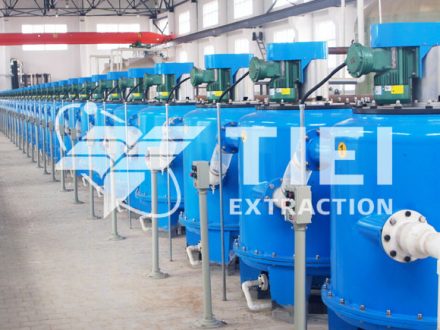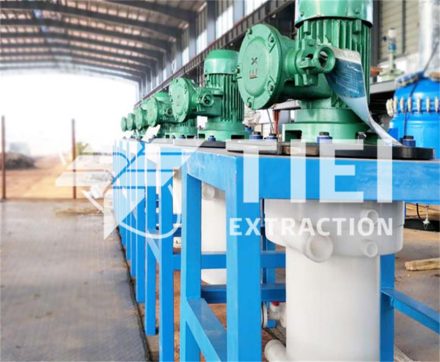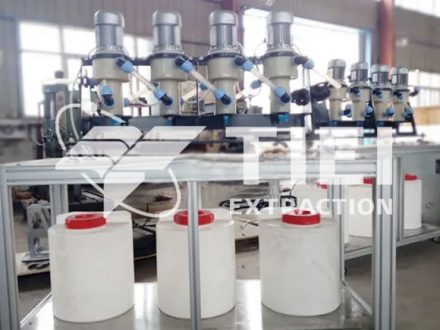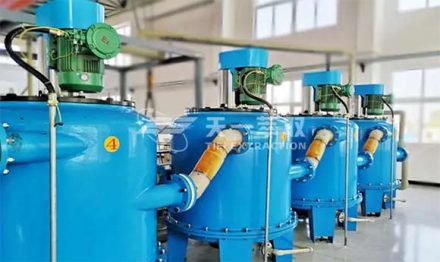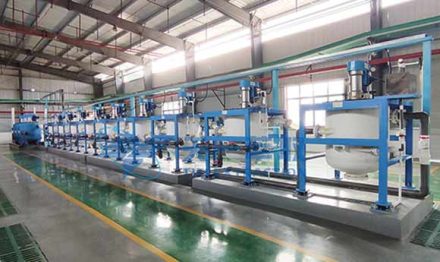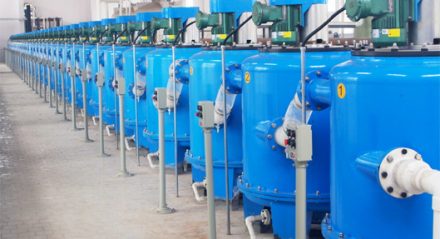
In the process of extracting lithium carbonate from lithium-containing brine, the first step is to remove boron.
Lithium-containing brine generally contains metal elements such as lithium, sodium, magnesium, and calcium, as well as non-metallic elements such as silicon, boron, sulfur, chlorine, and bromine. Metal elements and non-metallic elements such as silicon and sulfur can be separated by classification crystallization and sedimentation to obtain lithium salts with higher purity. Since the boron element exists in the brine in the form of boric acid or borate, and boric acid or borate has a large solubility in water, it is difficult to reduce the boron element in the brine to a lower level, which brings greater process difficulties to the subsequent purification or subsequent processing of lithium salt products. Therefore, the existing technology generally chooses to separate the boron element in the lithium salt liquid stage, which is one of the most economical ways to improve the purity of lithium salts.
Generally, the extraction method can only reduce the boron content in lithium liquid to 50ppm. Each extraction can only reduce the boron concentration by 10-15th, so it is necessary to repeat the extraction. After repeated extraction, the octanol solution will have a certain amount of dissolution loss, so the extraction method can only reduce the boron content in lithium liquid to 50ppm, and then other processes are selected to reduce the proportion of boron in lithium liquid.
Improved extraction process can reduce boron content to 10ppm.
The first thing to solve in the new process of removing boron from lithium-containing brine is the problem of octanol dissolution loss in the extractant. When isooctyl alcohol is used alone as an extractant in the traditional process, more isooctyl alcohol is dissolved in the water, that is, the loss of the extractant is high. Adding a certain amount of 2-octanol can reduce the loss rate of the extractant, but because the price of 2-octanol is high, the amount of 2-octanol is reduced, which reduces the process cost. On the other hand, adding kerosene to the extractant can dilute the extractant and reduce the amount of extractant. Secondly, when octanol is used alone for extraction, boric acid is extracted in octanol in a crystalline state, and the viscosity after extraction is very high. After adding kerosene, the viscosity of the oil phase is reduced, which is convenient for phase separation. The appropriate mixed extractant formula can improve the extraction efficiency and the utilization rate of the extractant, and reduce the burden of the recovery stage. The boron content in lithium liquid can be reduced to 10ppm.
New Extraction Process of Lithium-Containing Brine
- Acidification: Acidify the boron-containing lithium chloride aqueous solution with hydrochloric acid to the pH value of 1-3.
- Mixed extraction: Mix isooctyl alcohol and 2-octanol in a suitable proportion to obtain an octanol mixed solution, mix the octanol mixed solution with kerosene to obtain a mixed extractant, use the mixer settler to fully mix the acidified boron-containing lithium chloride liquid and the mixed extractant, and then stand to separate.
- Phase separation: After standing, the mixture of boron-containing lithium chloride liquid and the mixed extractant is separated into an oil phase and a first aqueous phase.
- Recovery: The first aqueous phase is led out and the boron content is tested. If the boron content exceeds the standard, it is led back to the extraction section and extracted as boron-containing lithium chloride liquid. The operation is repeated until the boron content of the aqueous phase meets the standard.
- Neutralization and recovery of the extractant: After the oil phase is extracted, it is neutralized with sodium hydroxide to a pH value of 12-13, fully stirred, and allowed to stand for phase separation to obtain an oil phase and a second aqueous phase. The oil phase is distilled and recovered and used as kerosene to prepare a mixed extractant. The second aqueous phase is a borate aqueous solution that can be used to prepare basic raw materials such as borax, which can reduce the economic burden of production and reduce wastewater discharge, making the production process more environmentally friendly.
After repeated extractions, the boron content of the first aqueous phase can reach 10 ppm, ensuring the accuracy of the product, which is higher than the boron content that can be achieved with existing technologies.
If you have any questions about lithium extraction from brine, welcome contact us.
Email: sales@tieiextraction.com
Whatspp: +86 19069612820

